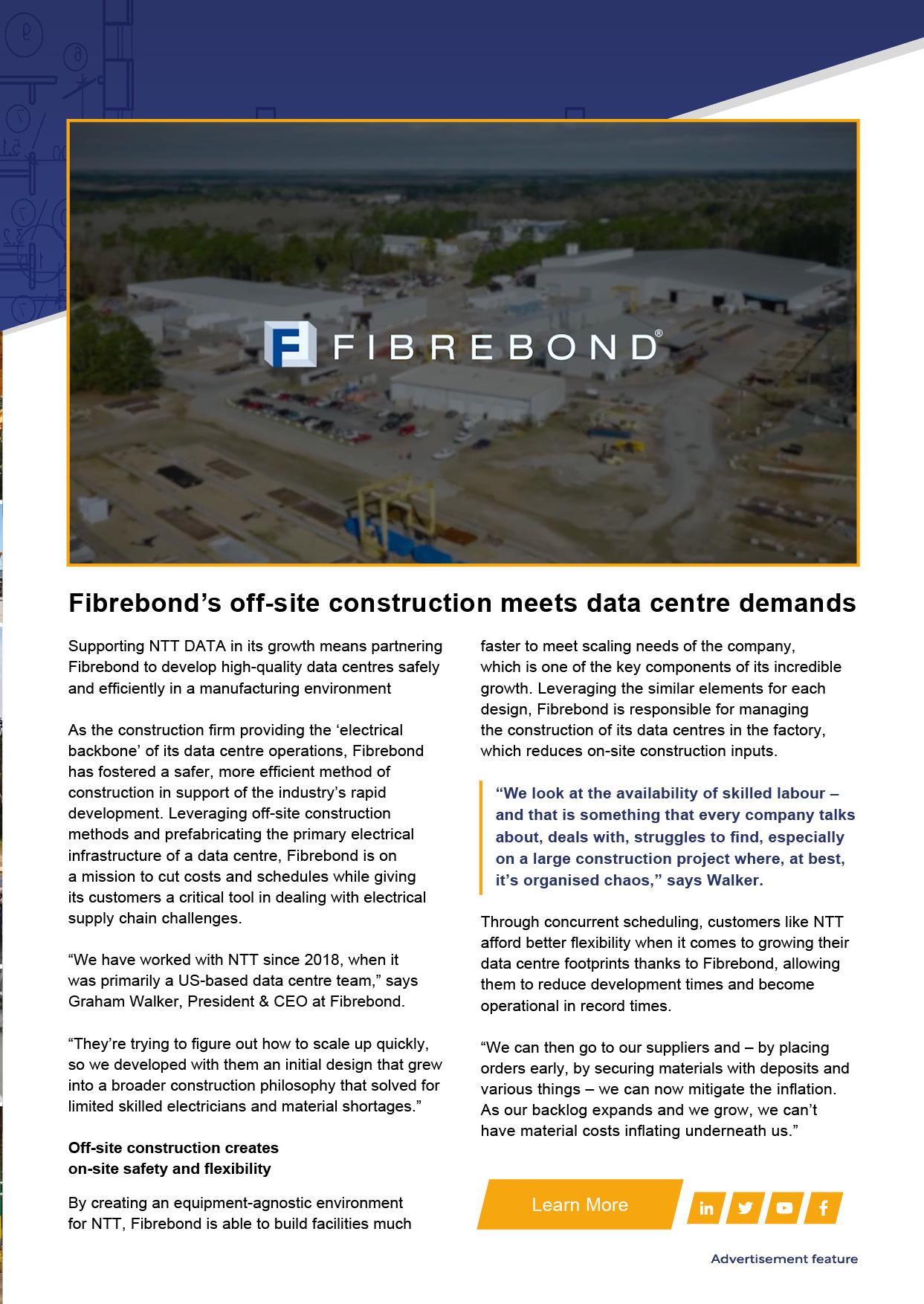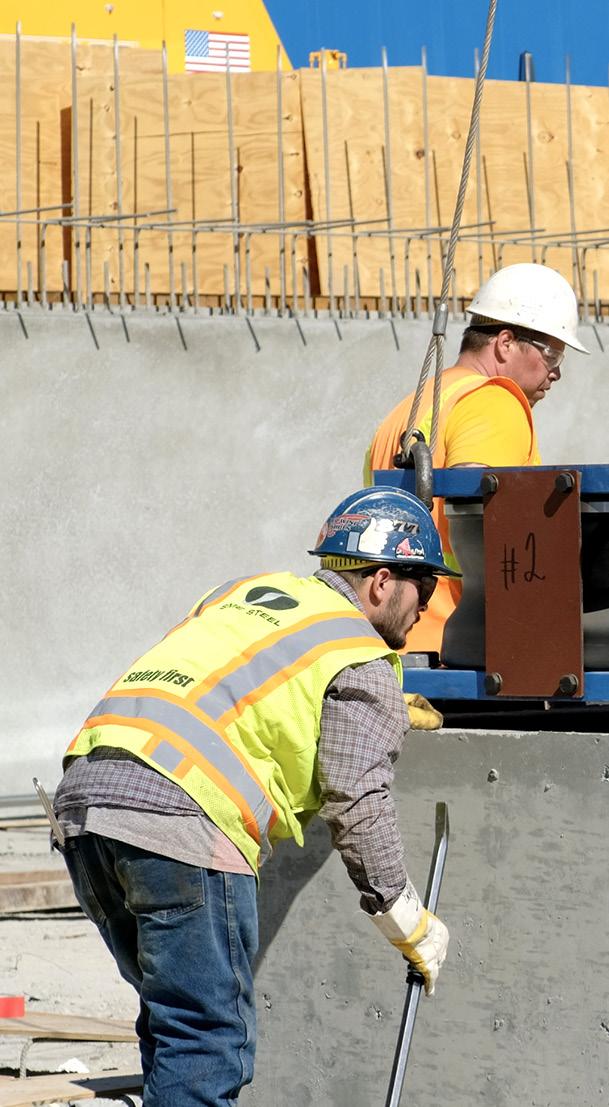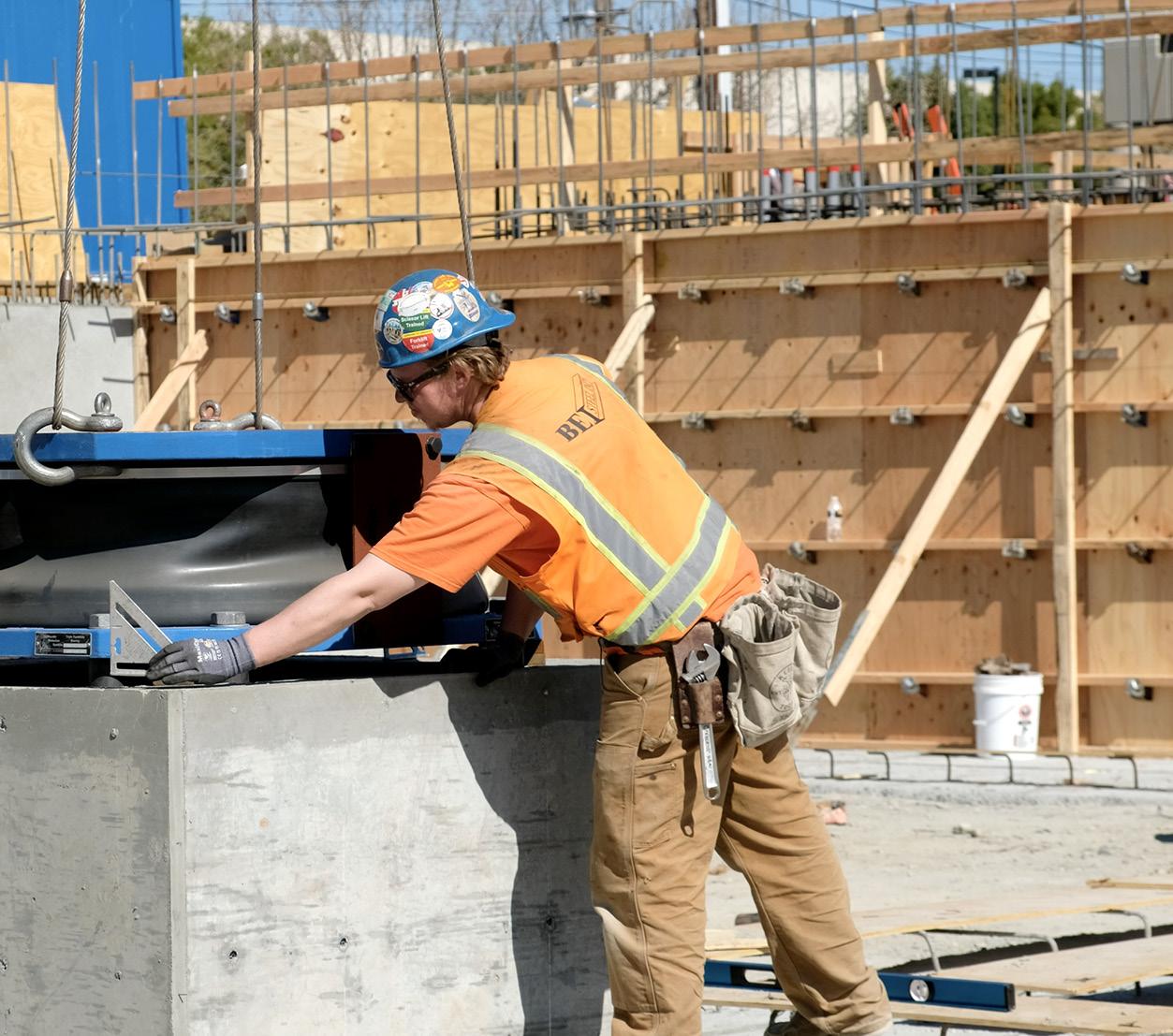
8 minute read
CUMMINS: DRIVING ZERO-EMISSION GOALS WITH INNOVATIVE TECH
from NTT - August 2023
Gary Johansen, VP Engineering at Cummins discusses how the business is working with clients and utilising new technology to achieve zero-emissions.
Operating in 190 countries with more than 70,000 employees, Cummins is a global enterprise and energy-to-power solutions provider. The business is driven by the goal of providing the right solutions for its customers to promote their sustainability ambitions, whether that’s regarding environmental, economic or community sustainability.
Destination Zero highlights Cummins’ ambitious goal of adopting a zeroemission footprint by 2050, through achieving zero emissions, waste and water usage within its operations. This not only applies to Cummins but to the business’ products in use too, as Cummins’ customers use fuel to operate the products, which of course, generates a carbon footprint.
Advancing Technologies And Emissions Reduction
To achieve these goals, Cummins is investing in a broad array of technologies that the business believes are meaningful and important for future sustainability efforts. For example, Cummins is investing in fuel-cell technology through zeroemission space Accelera, which is converting hydrogen energy into electrical power. “We also recognise that battery energy storage is a very critical part of many of our applications moving forward,” Johansen says. “So, we’re investing in battery energy storage and fuel cell technologies, while also advancing core technologies of today, including internal combustion engines to run on low and no carbon fuels.”

Additionally, Cummins has also been advancing internal combustion engine (ICE) efficiencies and emissions for decades – and continues to provide heavy investments. “Our exhaust emissions technology and other critical components, such as fuel systems, air handling systems and electronic controls are all critical to reducing emissions and improving fuel efficiency,” Johansen explains.
“The world needs us to decarbonise our infrastructure, and Cummins is providing opportunities to do so, as we serve so many which are crucial to our communities. Because of this, I don’t think there’s ever been a more exciting time to work at Cummins, or in the power space.”
MILLER SVP OF CONSTRUCTION, NTT GLOBAL DATA CENTERS
This strategic approach allowed us to scale rapidly while also providing flexibility to adapt the product based on customer requirements.”
Achieving scale
Addressing the topic of scale, Miller underscores the two primary tenets that drive the company’s approach: cost predictability and scalability. Through their standardisation efforts – and the subsequent ability to streamline operations and improve efficiency – NTT has successfully achieved scalability while maintaining cost control and project predictability.
Navigating the supply chain
As we all know, supply chain challenges have truly been redefined in recent years, and it’s no hyperbole to say that these disruptions have been unprecedented.

“However, by partnering with multiple suppliers in each equipment category and sharing our roadmap transparently, NTT ensures that suppliers have a clear understanding of our requirements.
“This collaboration enables effective planning, proactive decision-making and better management of supply chain risks,” she says.
Additionally, she points out that the standardisation of equipment across sites, allows NTT to leverage flexibility and move equipment as swiftly as needed, ensuring timely delivery: “Early commitment and close communication with partners facilitates timely responses to potential impacts during the production stage, enabling us to make informed business decisions and agile adaptations.”
The importance of having good people at NTT
Miller emphasises the crucial role of having a talented and dedicated workforce at NTT. “Hiring the right people and providing them with the right support enables them to take ownership of projects and make decisions that impact NTT’s overall success,” she says.

She draws from her experience at large tech companies, where working at a fast pace under pressure can be challenging.
“I believe that enjoying the work environment and having positive relationships with colleagues are essential for a fulfilling experience in any company.


As the saying goes, ‘people leave bad leaders, not bad companies’.”
To create a workplace where people enjoy coming to work and working with their colleagues, Miller focused on building a strong team. Though many positions were initially outsourced, she took the time to carefully select the right leadership team.

“This deliberate approach paid off, contributing to the team’s ability to scale rapidly and quadruple the business in just three years,” she says. “The people and leadership drive this success, and my leadership style involves regularly checking in with team members and addressing any roadblocks.”
Establishing culture and vision
In terms of team composition, Miller believes it starts with establishing the desired culture and vision. NTT’s culture revolves around connecting people and enabling them to deliver, while the vision is to scale rapidly and enter new markets swiftly.
“With these goals in mind,” she says, “the focus was on building a diverse leadership team with varied backgrounds. The team includes individuals from the data centre industry with hyperscale knowledge, as well as professionals from adjacent industries like hospitals and semiconductors.”
NTT also recruited people with deep expertise in supply chain management, “even if they had no prior tech experience”.
“By bringing together diverse perspectives and capitalising on the strengths of each team member, we were able to create a cohesive and highly effective team,” she says.
Miller gives prominence to the fact that the success of the leadership team led to the replication of this approach throughout the organisation, ensuring a consistent and aligned mindset.
“The concept of ‘winning together’ resonates with the team, as all functions, including engineering, construction, and supply chain, operate under the same organisational umbrella.
“This integrated approach encourages collaboration and shared responsibility in problem-solving. The team fosters a culture of innovation, understanding that taking risks and learning from failures are vital for growth and improvement.”
To further strengthen the team and address the industry’s talent shortage, NTT has launched an internship programme in their construction organisation. This initiative aims to develop young talent and inspire them to pursue careers in the data centre industry. By providing valuable industry exposure and experience, NTT hopes to retain talent within their organisation and contribute to the industry’s growth as a whole.

Outcomes of implementing the right teams
Since implementing the right teams throughout the organisation, NTT has experienced significant changes. One notable improvement has been a reduction in attrition, which had been high in the industry in recent years.

“The work being done at NTT, and the opportunity to contribute to building a new organisation with a strong foundation has generated a lot of excitement among our employees,” she says. “They appreciate the autonomy to create and improve processes, rather than following outdated methods that have been in place for many years. This sense of empowerment and continuous improvement is truly motivating for the team members.”
Miller points out that effective communication has also played a crucial role in retaining the team and fostering a positive work environment. She highlights the importance of consistently communicating the organisation’s vision and any changes that are coming.
“In fact, leaders should overcommunicate to ensure that everyone is aligned and understands the ‘why’ behind decisions and initiatives. Transparency in communication not only keeps employees motivated, but also fosters an environment of trust,” she says.
Expressing gratitude and acknowledging employees’ achievements is another significant factor in building a truly successful team.
“It’s actually very simple to say ‘thank you’ when someone does something awesome,” she says. “But it goes a long, long way.
Recognising and appreciating the hard work and dedication of team members through simple gestures like instant messages or emails can be very effective in boosting morale.”
NTT also implements initiatives such as ‘Coffee Connects’, where employees from different parts of the organisation come together virtually for a coffee break, fostering connections and collaboration. Regular all-hands meetings, monthly newsletters, and team-building challenges are other ways NTT creates a safe and open space for communication and connection.
Reflecting on her experience, Miller advises other organisations to prioritise listening.
“Truly hearing and understanding employees, whether it’s about their personal lives, challenges on projects, or any other concerns, is absolutely crucial.
“Leaders should actively remove roadblocks and support their team members. Building genuine connections with the team, remembering personal details about their lives, and showing care and support can go a long way in fostering a positive, productive work environment.
“Despite the fast pace of work, leaders should remember that it is the collective effort of the people that drives the success of an organisation,” she says.
Expert advice
Miller’s central message to the audience is to invest more in people, particularly in the construction industry. She says that taking care of employees and suppliers is crucial for the success of a company.
“By providing support, listening to their voices, and allowing them to be a part of the decision-making process, organisations
Investing In The Rising Data Centre Economy
The explosion in demand for data centres has attracted the attention of investors of all types –growth capital, buyout, real estate, and, increasingly, infrastructure investors. In the US market alone, demand measured by power consumption –to reflect the number of servers a data centre can house – is expected to reach 35 gigawatts (GW) by 2030, up from 17GW in 2022, according to McKinsey analysis. The United States accounts for roughly 40% of the global market.

can harness the dividends of employee engagement and satisfaction.
“I believe that people want to be a part of something meaningful, especially in the post-COVID world, and involving them in shaping the organisation can yield significant benefits.”
Construction: of the people, by the people, for the people
Miller adds that construction, as an industry, is heavily dependent on people. Despite advancements in technology in various fields, the construction industry has not seen significant progress in the last 60 years. Skilled labour in construction is limited, and there is no imminent threat of robots taking over jobs. She suggests that the industry should embrace diversity, allow people to work from different locations where possible, and challenge outdated norms.
“By prioritising the wellbeing and potential of individuals, the construction industry can unlock numerous opportunities for growth and success,” she says.
NTT’s partner ecosystem
Regarding partnerships, Miller discusses three companies: Fibre Bond, Cummins, and Silent-Aire.
Fibre Bond
Fibre Bond has been a long-standing partner of NTT, helping standardise their data centres and innovate within the constraints of the industry. “Our partnership has been characterised by mutual collaboration, agility, and a willingness to challenge each other for better results – key criteria for any successful partnership,” she says.
Silent-Aire
Silent-Aire, another strategic partner, is a prominent player in the semiconductor and data centre industry. “With their reliability and substantial manufacturing capacity, Silent-Aire has become one of NTT’s primary suppliers.”

Cummins
Cummins is a trusted supplier of generators in the data centre industry. “Although Cummins’ partnership with NTT is relatively new,” says Miller, “they have demonstrated reliability, effective communication of risks, and a strong commitment to delivery.” She points out that NTT shares extensive information with their partners, allowing them to align their efforts and deliver the expected outcomes. She says the company “expects a positive future with both Silent-Aire and Cummins” as their “strategic partners”.
The Next 12 to 18 Months for NTT
In the next 12 to 18 months, NTT’s focus will be on significant building projects. They have already secured customers for most of the capacity at their sites, and their major markets, including Phoenix,
Dallas, Hillsboro, Chicago, and Ashburn, will witness substantial construction, will witness substantial construction.
NTT plans to evolve their standard designs based on industry developments and address critical factors such as supply chain and power to enhance their competitive advantage in delivering future capacity.

Changes in the Industry’s Future Miller anticipates that the introduction of AI will increase spending from key technology companies and have a significant impact on the data centre industry, although the exact nature of this impact is yet to be determined. Increased demand due to AI will likely require larger data centre footprint, which may necessitate alternative design and construction methods; as such, Miller predicts that power will continue to be a crucial conversation in the industry.
“The availability of power in different regions – such as the middle of the United States – may become a target market for companies seeking quicker access to power infrastructure,” she concludes.


